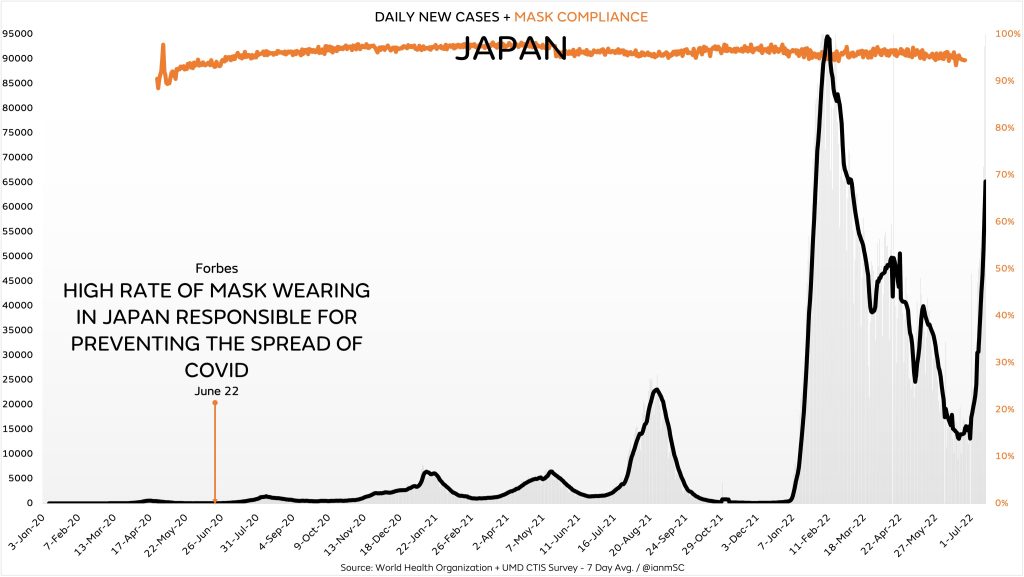Neal Priest is unable to offer a scientifically valid counterargument to my hypothesis that masks may enhance the spread of Covid. In place of one, we are treated to the old logical fallacy of appealing to authority. He cites a number of dubious scientific “studies” and proceeds to quote some of the more opaque but scientific sounding lingo — e.g. “Bayesian hierarchical model” — in order to mesmerize the reader into accepting his premise.
Has he read any of these studies himself? I doubt it. They are among the most embarrassing pieces of non-science published in our lifetimes.
You can instantly see the problem with these studies in just one word: model. All the studies showing “masks work” are based on models or deploy a model to “interpret” cherry-picked empirical data. Models are easily manipulated to yield the answer the author wants and cannot be trusted. When applied to what has, oddly enough, become a partisan issue, they should definitely be ignored.
Yes, masks “stop particles” and in that sense they “work” mechanistically. But mechanistic function does not necessarily equate to goal achievement. A sponge absorbs water but it won’t stop your basement from flooding. Mechanical functionality is a necessary but not sufficient component in preventing infection. Masks become saturated with moisture, dirt, and particles. They are easily bypassed when not fitted properly (spoiler: they are almost never fitted properly). They allow some particles through, and if you tighten the porosity to prevent that, you only enhance the bypass effect.
The irony is that the only mask that would actually work is a respirator, but how about that: those were specifically forbidden in all the mandates. And since we don’t know the viral load needed to infect someone there is no rationale, objective way to assert effectiveness. The “experts” are literally just guessing.
When we return to the real world from the fantasy world of models, we find the data shows zero effect on community infection rates. Japan, the poster child for “masks work,” has 99% compliance but a case rate through the roof since January (see below).

This phenomenon can be replicated across the world, again and again. “It would have been worse without them” is not an answer, because it simply asserts the very thing that needs to be proven. Meanwhile, in Sweden the only people wearing masks are deluded American tourists, and there have been no ill effects.
The null hypothesis puts the burden of proof on the mask proponents. If there is even one instance showing masks “don’t work” then the entire hypothesis must be discarded. Science is not a game in which each side scores points and the winner is whoever is currently ahead. The hypothesis is either true or it is not.
Priest can cite however many model based studies that he wants, but I need only to point to a single study showing no effect from masks. But my side doesn’t have just one study. We have countless thousands. Every chart comparing locales with and without a mask mandate only underscores their total lack of utility.
If masks “worked,” it should be easy to look at the charts of various countries and determine when large-scale masking, or mask mandates, must have been introduced. But the results are instead entirely random. In Austria, Spain, Belgium, the UK, Germany, Italy, and so on, if I showed you the charts of their Covid results you would have no way of figuring out when mask mandates began in each country. But if masks are worth arguing about, shouldn’t their effects be so clear that we can easily determine when they started being used on a large scale?
No matter how much Neil may wish it were otherwise, most people agree with me. Just visit any airport or sporting event now that the mask mandates are gone. The ratio of mask-free to masked is easily a hundred and often a thousand to one. People are smart and see through the dissembling of the mask nags. Witness “our democracy” in action every day as people vote with their faces.


